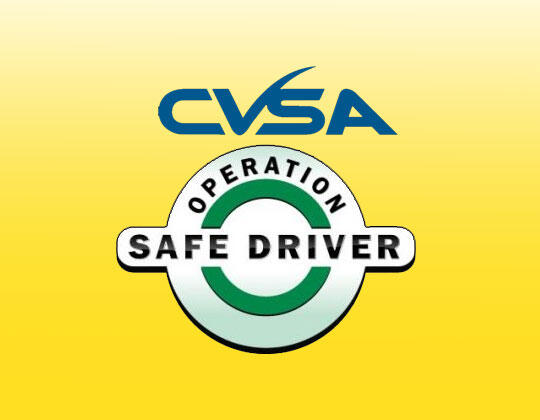Heat and Your Truck
Read the latest Idealease safety bulletin below or access the entire bulletin here. Remember to sign up for the weekly bulletin and receive it directly in your inbox! Stay informed on the latest safety news, tips, and information! Need a PDF version to download and share?
Any driver who operates a commercial motor vehicle (CMV), needs to be aware of how heat affects the operation of the CMV. Two areas that require extra attention are the engine coolant and the tires.
In This Issue:
- How Heat Affects the Operation of Your Commercial Motor Vehicle
- An Aging Driving Force
How Heat Affects Your CMV
Engine Coolant
8 years ago, the OEM truck manufacturers introduced extended life coolant (ELC) into the industry! With each EPA change, the operating temperature of the engine has increased 10 to 15 degrees. It is estimated that 50% of all engine failures are associated with an overheat condition of the engine. With today’s emission systems an engine running low on coolant runs the risk of damaging the emission components: the exhaust gas recirculation or EGR. The benefit of using ELC is improving the engine's heat transfer rate by 12 to 13 percent over conventional anti-freeze.
There is a quality level sensor in the DEF tank thank can be affected by extreme heat. It is recommended that you keep the DEF tank as full as possible to keep the sensor cool in extreme heat conditions.
During the pre-post trip inspection driver should:
1. Make sure that the coolant level is within range of the marking on the side of the coolant reservoir.
2. If the coolant level is low, contact your Idealease service provider immediately for direction. ELC coolant should be a red/orange color and should be free of dirt, debris, rust, and other contaminants. DO NOT MIX ELC with mixed conventional anti-freeze!
3. When operating a CMV a dash light comes on with an overheat warning immediately pull the unit into a safe parking place and contact your Idealease service provider for direction. Operating the unit in an overheated situation can severely damage the engine.
Tires
During the summer season, when the ambient temperatures can get well over 100° F, and road temperatures reach almost 200° F, the heat problems caused by underinflation are more extreme. Tires that are underinflated are more prone to fail in these temperatures. Heat and tires are not friends. In short, hot summer temperatures, underinflated tires, heavy loads, and traveling at high speeds is a recipe for tire disaster.
What can drivers do to minimize tire-related issues during the summertime months?
- Checking tire pressures more frequently in the summer.
- Tire pressures need to be checked when the tire is “cold” and not after the operation. Pressures can increase during operation when “hot” by as much as 15% giving you a false reading.
- Inspect tires for punctures and damage during pre-post trip inspections and stops. Tire punctures tend to increase during the summer because the tread rubber becomes hotter and “softer” and acts as a magnet to nails and road debris.
- Immediately report to your Idealease service provider tire conditions that need attention.
An Aging Driver Force
As we look into the future, the continued challenge of a driver shortage looms as a “perfect storm”. Many variables have an impact on the shortage; driver shortages, an aging workforce, and finding qualified drivers. As we see freight volumes increase many fleets are having trouble attracting qualified drivers and may be unable to seat trucks or add capacity at a time when freight volumes are growing. If current demographic trends continue, that shortage of truck drivers could increase to 111,000 by the end of the year. Over the next decade, the trucking industry will need to hire a total of 890,000 new drivers or an average of 89,000 per year. Replacing retiring truck drivers will be by far the largest factor, accounting for nearly half of new driver hires (45%). The second largest factor will be industry growth, accounting for 33% of new driver hires. As transportation managers, we are seeing our driver workforce continue to age. The average age of a truck driver in the United States is over 50 years. Since 2000, the number of truck drivers 55 or older has surged 19%, to about 616,000, according to the federal Bureau of Labor Statistics. Truck companies with baby boomer drivers insist their safety record is at least as good as that of younger drivers. This is a segment of our driving force that we need and depend on. As all of us age, we do not physically or mentally age at the same rate.
The FMCSA does not have a maximum age limit for drivers of commercial motor vehicles unlike that of the FAA concerning pilots. All drivers are subject to the medical qualifications of the medical certification requirements of CFR 391.
But, the question remains, how do we as transportation managers know when it is time to ask for the keys of a driver that is no longer able to operate safely?
Here are a few suggestions:
- Develop a proactive safety and loss control program with policies and procedure that are not bias to age.
- Require all drivers to have physical examinations completed by an FMCSA registered medical examiner who has a relationship with your company.
- Develop job descriptions and job requirements for all positions based on the actual requirements of the job activity.
- Implement a defensive driver training program with updated training annually for all drivers.
- Administer structured check rides at least annually to all drivers to access the driver’s skills and abilities.
- Develop a continuing relationship with all drivers to keep an open line of communication regarding the driver’s ability to complete their driving responsibilities safely.
- Be vigilant and observant of the actions of all drivers.
CVSA "Operation Safe Driver Week"
July 10-16, 2022

Throughout Operation Safe Driver Week, law enforcement personnel will be on the lookout for commercial motor vehicle drivers and passenger vehicle drivers engaging in risky driving. Identified unsafe drivers will be pulled over and issued a citation or warning. Data shows that traffic stops and interactions with law enforcement help reduce problematic driving behaviors. By contacting drivers during Operation Safe Driver Week, law enforcement personnel aim to make our roadways safer by targeting high-risk driving behaviors.
https://www.cvsa.org/program/programs/operation-safe-driver/operation-safe-driver-week/
*The Idealease Safety Bulletin is provided for Idealease locations and their customers and is not to be construed as a complete or exhaustive source of compliance or safety information. The Idealease Safety Bulletin is advisory in nature and does not warrant, guarantee, or otherwise certify compliance with laws, regulations, requirements, or guidelines of any local, state, or Federal agency and/or governing body, or industry standards.
